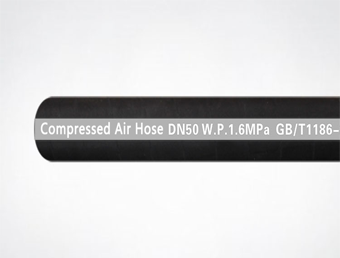Explore the reliability of hydraulic hose assemblies and strategies for dealing with extreme working
2025-05-29 15:49:38
In modern industrial applications, hydraulic hose assemblies, as a key flexible connection component, are widely used in fields ranging from construction machinery to aerospace. However, when using hydraulic hose assemblies under extreme working conditions, reliability issues become an important factor that cannot be ignored. This article will explore the reliability of hydraulic hose assemblies under extreme working conditions and how to effectively formulate response strategies to ensure their efficient and safe operation.
Structure and function of hydraulic hose assemblies
The hydraulic hose assembly consists of an inner rubber layer, a reinforcement layer and an outer rubber layer. The inner rubber layer is mainly responsible for the sealing and transmission of the fluid, the reinforcement layer provides pressure resistance, and the outer rubber layer is to protect the hose from external damage. Under extreme working conditions, such as high temperature, low temperature, high pressure, corrosion, etc., the performance of the materials at each level directly determines the overall reliability of the hydraulic hose assembly.
Impact of extreme working conditions on hydraulic hose assemblies
High temperature environment
Under high temperature conditions, hydraulic hoses are prone to aging, and the inner rubber layer material softens, becomes brittle, or even cracks. In order to meet the challenges of high temperatures, it is key to select materials with high temperature resistance. Generally, fluororubber and silicone rubber are ideal choices due to their high temperature stability.
Low temperature environment
Low temperature environments cause materials to shrink and harden, resulting in reduced flexibility of hydraulic hoses, thereby increasing the risk of rupture. Using low temperature resistant materials, such as polyurethane, can maintain the flexibility and durability of the hose in low temperature environments.
High pressure conditions
Under high pressure conditions, the reinforcement layer of the hydraulic hose is particularly important. For extreme high pressure conditions, it is usually necessary to select multiple layers of high-strength braided or wound reinforcement materials, such as steel wire or aramid fiber, to provide the necessary pressure resistance and burst strength.
Corrosive environments
Corrosive environments place stringent demands on the materials used to make the outer layer of hydraulic hose assemblies. Using an outer layer material that is corrosion resistant can extend the life of the hose. Fluororubber outer layers are often the best choice for chemical corrosion resistance.
Strategies to improve the reliability of hydraulic hose assemblies
Material selection
Choosing the right material is the basis for improving the reliability of hydraulic hose assemblies. After determining the temperature, pressure, and chemical properties of the working environment, the appropriate material is selected to ensure optimal performance. For example, the use of composite materials can provide greater durability when facing high pressure and high temperature conditions.
Regular inspection and maintenance
When using hydraulic hoses in extreme conditions, it is critical to regularly inspect appearance and performance indicators. Advanced inspection methods such as infrared thermal imaging can be used to predict thermal damage and potential failures, and to perform maintenance and replacement in a timely manner. Maintenance is not just about replacing aging lines, but also about keeping the hose surface clean and ensuring the integrity of connections and seals.
Optimizing hose design
Designing customized hydraulic hose assemblies for different working conditions is another effective way to improve reliability. By optimizing the length, bending radius and installation method of the hose, it is ensured to be flexible and applicable in actual working conditions, and to avoid the generation of excessive stress concentration positions.
Education and training
Technical training and safety awareness of staff play an important role in ensuring the reliability of hydraulic hoses. Only by letting operators understand how to properly install, operate and maintain hydraulic hoses can the occurrence of failures caused by human factors be effectively reduced.
Practical application case analysis
In a heavy machinery manufacturing company, the hydraulic hose assembly has frequently failed due to environmental changes in its large excavation equipment. After careful analysis, the problem was mainly due to ignoring the effect of low temperatures in winter on the flexibility of the material. In the end, after the company replaced the polyurethane material that can maintain good flexibility in low temperature environments, the reliability of the equipment was significantly improved. At the same time, the periodic maintenance plan was strictly implemented to improve the stability of the entire production process.
Under extreme working conditions, the reliability of the hydraulic hose assembly becomes the key guarantee for the normal operation of the equipment. By selecting suitable materials, regular inspection and maintenance, optimizing design and focusing on personnel training, companies can effectively improve the safety and durability of the hose system. In the future, with the continuous advancement of materials science and testing technology, the application scenarios of hydraulic hose assemblies will become more extensive and safer, and will continue to promote the development and innovation of related industries.